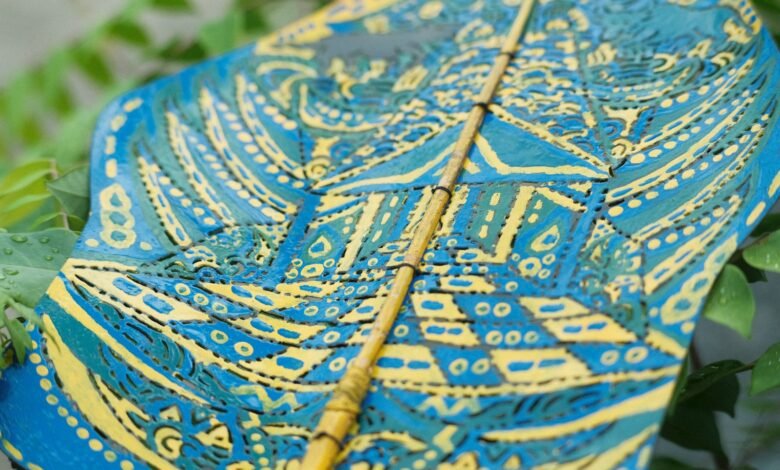
Indonesia, with its rich cultural heritage, is home to a stunning array of traditional arts and crafts that have been passed down through generations. These crafts are not just artistic expressions; they are deeply tied to the spiritual and social fabric of the nation. From intricate textiles to mesmerizing dances, Indonesia’s arts and crafts offer a glimpse into the country’s diverse traditions and history.
1. Batik
Perhaps the most famous traditional art form in Indonesia is batik, a textile art that involves the application of wax and dye to fabric. Originating in Java, batik is known for its elaborate patterns and vibrant colors, often depicting nature, folklore, or religious symbols. The process of creating batik is meticulous and time-consuming, making each piece unique. This art form is recognized as a UNESCO Intangible Cultural Heritage and is widely celebrated in fashion, home décor, and ceremonies across Indonesia.
2. Wayang Kulit (Shadow Puppetry)
Wayang Kulit is an ancient form of puppetry that uses intricately crafted leather puppets to tell stories. The shadow play is performed behind a backlit screen, creating dramatic shadows that bring the characters to life. These performances often recount traditional Hindu epics like the Ramayana and Mahabharata. Wayang Kulit is more than just a form of entertainment; it serves as a tool for teaching moral lessons and preserving historical narratives.
3. Ikat Weaving
Ikat weaving is another significant textile craft found across various regions of Indonesia, especially in Sumbawa, Flores, and Sulawesi. The distinctive feature of ikat is the tie-dye technique used to create intricate patterns on the threads before they are woven. These textiles are often used in traditional ceremonies and are highly valued for their craftsmanship. The process requires a great deal of skill and patience, making each piece a work of art.
4. Wood Carving
Wood carving is a traditional craft that has been practiced by many Indonesian cultures, particularly in Bali and Yogyakarta. Artisans carve intricate designs into wood, creating everything from decorative masks and sculptures to furniture and religious symbols. These carvings often feature elements of local folklore, mythology, and nature, and are used in religious ceremonies, festivals, and daily life.
5. Silver Crafting
Indonesia is renowned for its high-quality silverwork, especially in Yogyakarta and Bali. Traditional silver crafting techniques are used to create stunning jewelry, household items, and ceremonial pieces. The fine detailing and craftsmanship in Indonesian silverwork often reflect the cultural and spiritual values of the communities, with designs inspired by nature, religion, and daily life.
6. Traditional Dance and Music
Indonesia’s traditional dances and music are vital components of its cultural expression. Balinese dance, for example, is known for its elaborate costumes and expressive hand movements. Gamelan, a traditional ensemble of percussion instruments, is an essential part of Indonesian music, with each island offering its unique style. These dances and music forms are often performed during religious ceremonies and cultural festivals, providing a visual and auditory connection to the nation’s traditions.
7. Ceramics and Pottery
Indonesia has a long history of pottery-making, especially in regions like Java, Bali, and Lombok. Traditional Indonesian pottery often features unique, hand-painted designs and is used for everyday life as well as ceremonial purposes. The designs can range from simple geometric patterns to intricate depictions of animals and nature.
8. Traditional Indonesian Masks
Masks play a significant role in Indonesian performance arts, particularly in Balinese and Javanese cultures. These masks are used in traditional dances, puppet shows, and rituals. They are often handcrafted from wood and decorated with vibrant colors and detailed carvings, representing various characters, gods, and mythical creatures.
9. Sculpture
Indonesian sculpture has deep roots in the country’s religious and cultural history. The ancient temples of Java and Bali feature stone sculptures of deities, animals, and mythical creatures. Modern Indonesian sculptures continue to explore themes of spirituality, identity, and culture, often using various materials, including wood, stone, and metal.
Indonesia’s arts and crafts provide a window into the country’s soul, offering a blend of tradition, spirituality, and creativity. Whether through textiles, performance arts, or visual craftsmanship, the richness of Indonesian culture is reflected in the diversity of its artistic expressions.



